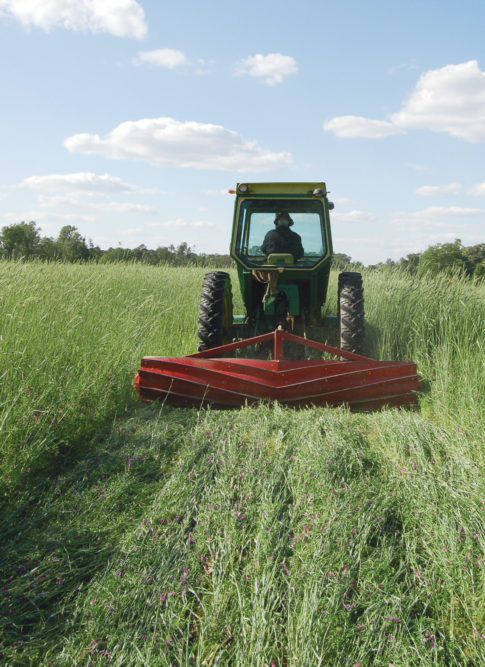No-Till Farmer
Get full access NOW to the most comprehensive, powerful and easy-to-use online resource for no-tillage practices. Just one good idea will pay for your subscription hundreds of times over.

Paul Davis finds it easy to explain why cover crops make sense for no-tilling corn, wheat, soybeans and pumpkins on the family farm near New Kent, Va.
“I want to increase the soil organic matter, which on our Coastal Plains’ soils is 1% or, at best, 1.5 %,” says Davis, who retired in 2009 after 28 years as the Virginia Tech Extension ag agent for New Kent and Charles City counties. “That’s why I grow cereal crops, like winter wheat and cereal rye.
“I let the cereal rye make carbon. By making carbon, the cereal rye will not release the nitrogen sequestered in the carbon for the corn crop planted the following spring. But eventually, the nitrogen will be released in the soil.”
No-tillers can reap benefits from cover crops soon after they are seeded in the fall, says Davis, who farms with his father “Boogie” Davis.
“After harvesting double-crop soybeans in the fall, we want something green and growing to trap the nitrogen, phosphorus and potassium in the soil,” he says.
Davis uses hairy vetch and cereal rye in a four-crop, 2-year rotation. The Davises began no-tilling in 1970, starting with double-crop soybeans, then corn and full-season soybeans. Since they started no-tilling winter wheat, Davis began calling their system “never-till.”
“This is the sixth year we have grown corn following winter annual cover crops,” he says. “And this year is the first that almost all of our corn has been planted into hairy vetch. In the previous 5 years…